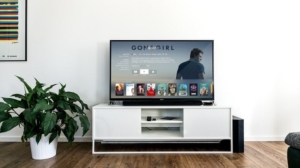Guess what percentage of the population has a favorable opinion of chiropractors.
Seventy-five? Eighty?
It’s more like 50 percent, according to a recent poll by the Gallup organization.
Which may lead you to think, “50 percent doesn’t like us!” What a disaster!
But that’s not what the poll said.
The question was whether they agreed with this statement: Most chiropractors are trustworthy.
Only 9 percent said they disagreed with the statement. That’s pretty good.
Fifty-two percent said they agreed with the statement. That’s not terrible, though we’d like it be better.
But think about this: Thirty-nine percent of the people polled said they didn’t know or were neutral on the question.
Almost four out of ten.
That’s a huge opportunity for chiropractors.
They need to hear our story. How we reach these people? Marketing. Branding. Advertising.
Yes. But what works? You can throw money at the opportunity and never move the needle.
We’ve distilled the foundational principles of marketing in our book, “Chrome.”
“Chrome” is a concise guide to the basics of achieving affluence with your chiropractic practice by building a shiny brand. At the core are the twin pillars of the right marketing and designing a memorable patient experience.
Let’s go back to the poll for a moment.
These are the people who’ve never been to a chiropractor. They have no opinion on trustworthiness. But many of them have an impression. They are frightened or distrustful of anything new, or just don’t have the information. This is where we can shine.
But we know this. You don’t start with spending a bunch of money on advertising.
Radio, TV, print, online – they all have their place at the end of the process. Not the beginning.
As we discuss in Chrome and reinforce in SIDECAR’s training, there a prescribed order to marketing.
It starts with operations. The systems and procedures in your practice must be tight. Your teams must understand how they fit into the whole process. What are the expectations for them? What does that look like in your practice?
That lays the foundation for designing memorable patient experiences. When you deliver on that promise, it leads to more and better referrals from your happy and enthusiastic patients. Those steps, properly executed, create your shiny brand.
Only then is it time to use traditional advertising. Then you’re adding fuel to the fire.
Without that shiny brand, you’re just burning money.



 Dr. Nathan Unruh, CXO SIDECAR
Dr. Nathan Unruh, CXO SIDECAR

 Dr. Douglas Sea, SIDECAR
Dr. Douglas Sea, SIDECAR Dr. Douglas Sea, CTO SIDECAR
Dr. Douglas Sea, CTO SIDECAR